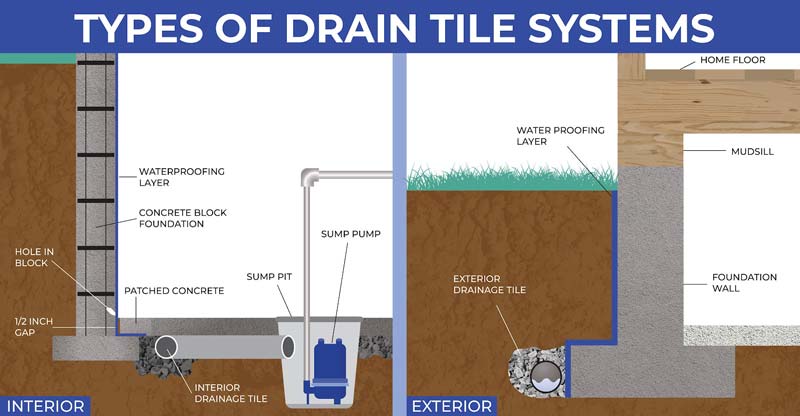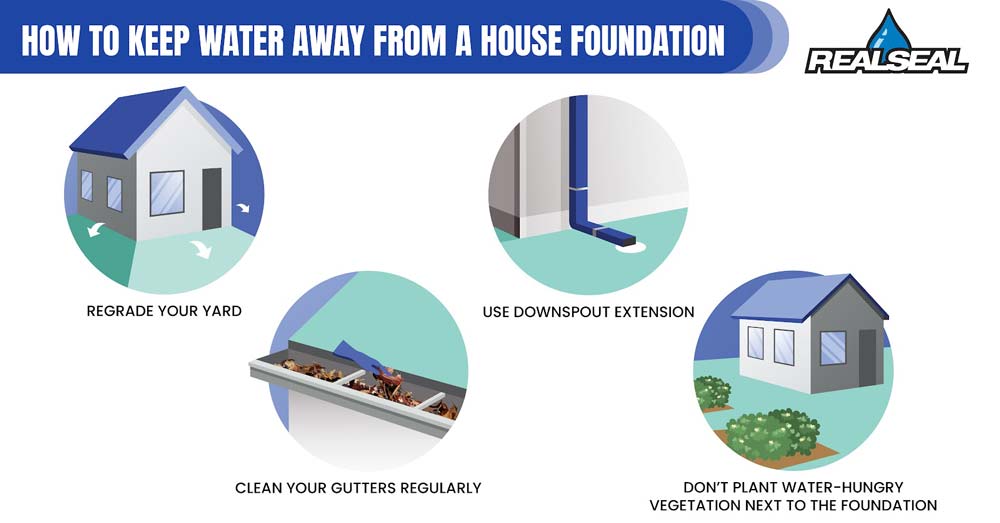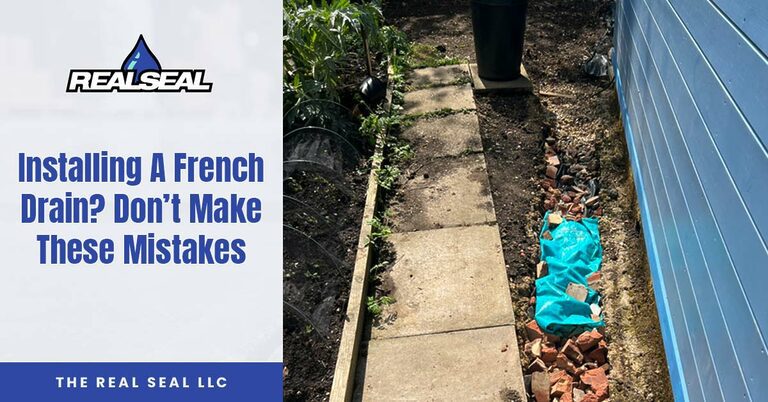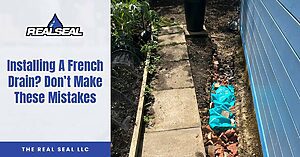Thinking about installing a French drain? If so, you’re making a great decision – not only will a French drain help with drainage, but it can also give your home an extra layer of protection against potential flooding. However, installing the French drain correctly is key to achieving its full benefit, and too many homeowners make simple mistakes that can significantly reduce a French drain’s effectiveness.
In this article, we will review the most common mistakes made when installing a French drain, why it’s better to hire a professional to install a French drain, and other things you can do to help keep the ground around your home’s foundation dry.
What Is a French Drain?
A French drain is a drainage system used to divert water away from a particular area. The system collects groundwater via a perforated pipe and directs it away from a foundation or other areas that require protection from excessive moisture. You can also learn more about how a French drain works.

Benefits of a French Drain
One of the primary benefits of a French drain is that it prevents water from pooling in the targeted area and causing damage or erosion. This makes it particularly useful for areas with high levels of rainfall, low-lying areas, or those prone to flooding.
French drains are commonly used in landscaping, construction, and agricultural applications. A French drain can be installed in landscaping to protect a garden or lawn from water damage caused by heavy rainfall. In construction, French drains prevent water from seeping into basements, foundations, and crawl spaces. Similarly, French drains prevent flooding and soil erosion in agriculture, thereby increasing crop yields.
See How A Drain Tile System Can Save You Money for more information.
Common French Drain Mistakes and How To Avoid Them
Common mistakes people make when installing a French drain include the following:
- Forgetting about buried utilities – One of the first things to consider when installing a French drain is understanding what utilities might be buried underground. This is important because you don’t want to accidentally damage gas or power lines. Check with your local authorities or utility companies to locate underground utilities before installing a French drain.
- Using the wrong kind of drainage rocks – Choosing the correct type of stones is crucial to ensuring optimal drainage. Use materials like crushed aggregates or drainage stones, as these are ideal for facilitating the proper movement of water. However, crushed stone needs to be washed to get all the small dust/debris out of it.
- Not using drainage fabric – Lining the trench with the correct drainage fabric is also essential, as this will prevent soil and debris from clogging the drain. A drainage fabric specifically designed for use with French drains should be used. It’s essential to ensure the fabric is laid correctly to avoid creating any wrinkles or folds that can restrict water flow.
- Replacing the excavated soil – In some cases, the soil may have caused the drainage problem. If so, you’ll need to replace it with soil that allows for proper drainage.
- Incorrect slope – It’s essential to ensure the slope is correct so water can drain away from the foundation and not toward it. A gradient of around 1 inch for every 8 feet is ideal.
- Not using a drainage pipe – Using gravel alone won’t be sufficient, as it can quickly become clogged with soil and debris. A pipe will ensure water is effectively directed away from the foundation and towards a designated drainage area.
- Not positioning the drainage pipe correctly – The drainage pipe needs to be placed so the holes are facing down. A common mistake is to place the pipe so the holes face up. This makes the system much less effective as water needs to build up around the pipe first before it can drain into it through the holes. When the holes in the drainage pipe are facing down, as soon as the water rises it enters the pipe immediately and then travels to the discharge point.
Benefits of Hiring a Pro to Install a French Drain
Installing a French drain may seem like a DIY project, but it’s a complex process that requires specialized skills and equipment. Hiring a professional contractor to install your French drain has numerous benefits, making it a worthwhile investment. These include the following:
- Expertise – A professional contractor has the necessary expertise and knowledge to assess the terrain of your property and determine the best location and angle for the drain. They will also ensure the drain is installed with the correct slope to direct groundwater away from your foundation.
- High-quality materials – A professional contractor will use high-quality materials and equipment to install your French drain system. This includes high-grade perforated piping, gravel, filter fabric, and other components. With the help of experienced professionals, you can be sure that the materials used are of the highest quality and will last for years without requiring costly repairs or replacements.
- A pro can get the job done quickly – Installing a French drain yourself can be time-consuming and physically demanding. Hiring a professional contractor means the job will be completed quickly and efficiently while also minimizing property damage. This lets you focus on other essential tasks while your French drain is installed.
- Safety first – Professional contractors have experience working with potentially dangerous equipment, such as backhoes or trenchers, while ensuring no threat to human life or property. Safety is a top priority, and professional contractors adhere to rigorous safety standards to ensure your project is completed with minimal risk to those involved.
Other Things You Can Do to Help Keep the Ground Around Your Foundation Dry
In addition to a French drain, there are other things you can do to help keep the ground around your foundation dry. These include the following:

- Regrade your yard, if necessary – This involves reshaping the land around a home to encourage proper water drainage. This can be done by adding soil to low areas and creating slopes away from the foundation. By doing so, water is directed away from the home’s foundation.
- Install downspout extensions – These extensions direct water from a home’s gutter system away from the foundation. This prevents water from pooling around the foundation, which can eventually cause cracks or other damage.
- Clean your gutters regularly – Clogged gutters can cause water to overflow and pool around the foundation, leading to water damage and potential foundation issues. A well-maintained gutter system will ensure proper water drainage and protect the foundation.
If you’re considering a French drain for your Chicagoland property, contact The Real Seal today to schedule an evaluation and receive an estimate.






